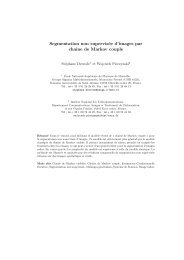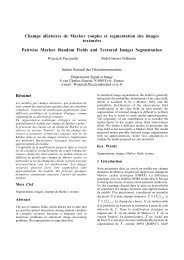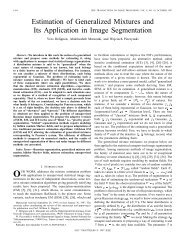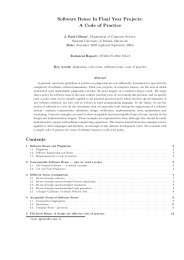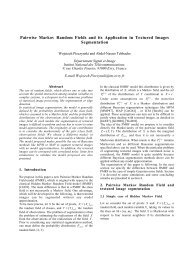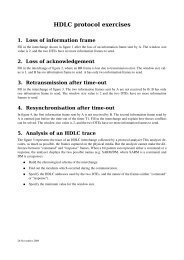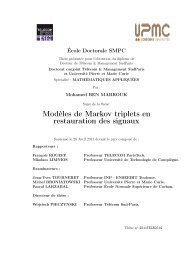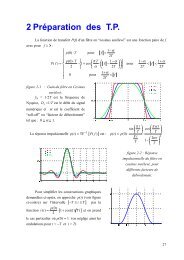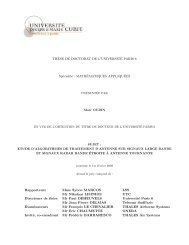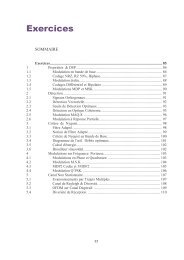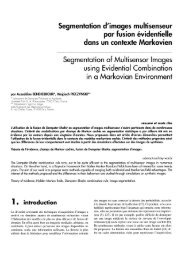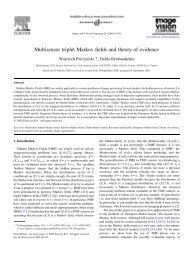Convergence Analysis and Design of Multiple Concatenated Codes
Convergence Analysis and Design of Multiple Concatenated Codes
Convergence Analysis and Design of Multiple Concatenated Codes
You also want an ePaper? Increase the reach of your titles
YUMPU automatically turns print PDFs into web optimized ePapers that Google loves.
Background<br />
<strong>Concatenated</strong> codes <strong>and</strong> iterative decoding<br />
• Original turbo code by Berrou, Glavieux, <strong>and</strong> Thitimajshima (BGT) (1993).<br />
• BGT: two punctured convolutional codes concatenated in parallel.<br />
• Performance close to capacity.<br />
EXIT charts for convergence analysis <strong>of</strong> iterative decoding<br />
• Two serially/parallel concatenated codes by ten Brink in (1999, 2000).<br />
• <strong>Multiple</strong> concatenated codes (MCCs) with N = 3 components in (2001, 2002).<br />
This presentation:<br />
• <strong>Multiple</strong> parallel concatenated codes (MPCCs).<br />
• <strong>Convergence</strong> analysis using projected EXIT charts.<br />
• Optimal puncturing ratios.<br />
• Optimal energy distribution.<br />
<strong>Convergence</strong> <strong>Analysis</strong> <strong>and</strong> <strong>Design</strong> <strong>of</strong> <strong>Multiple</strong> <strong>Concatenated</strong> <strong>Codes</strong>, Fredrik Brännström 2005 1



